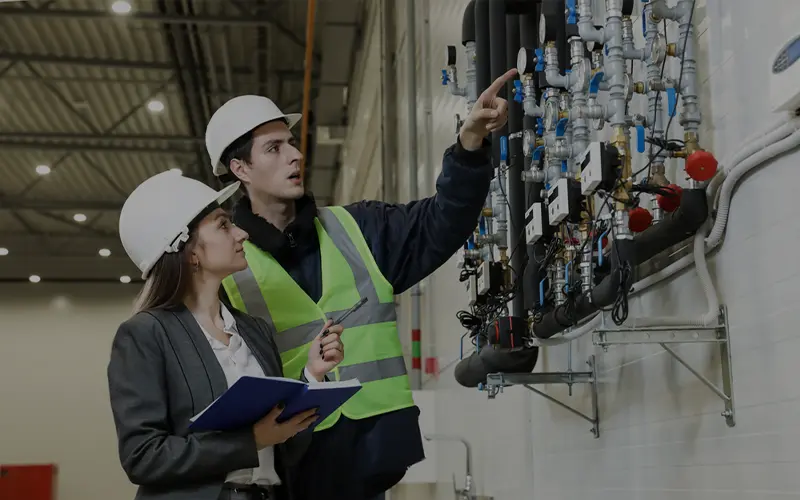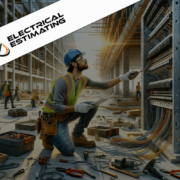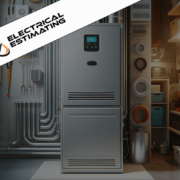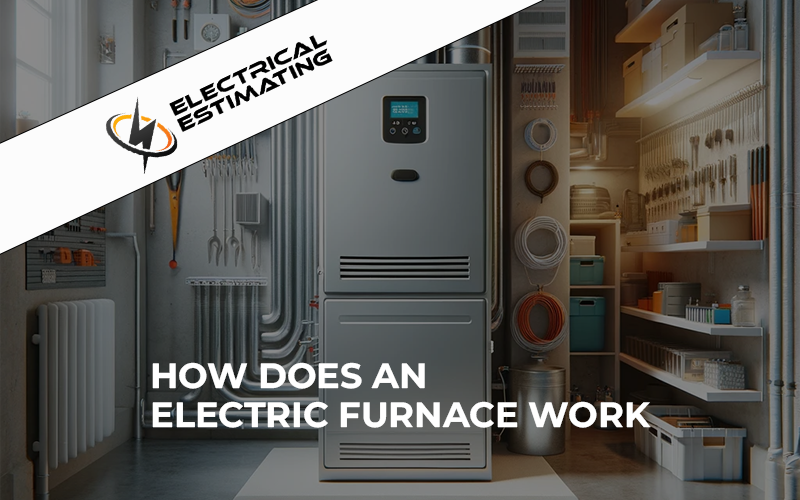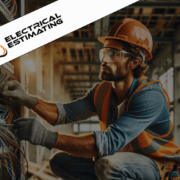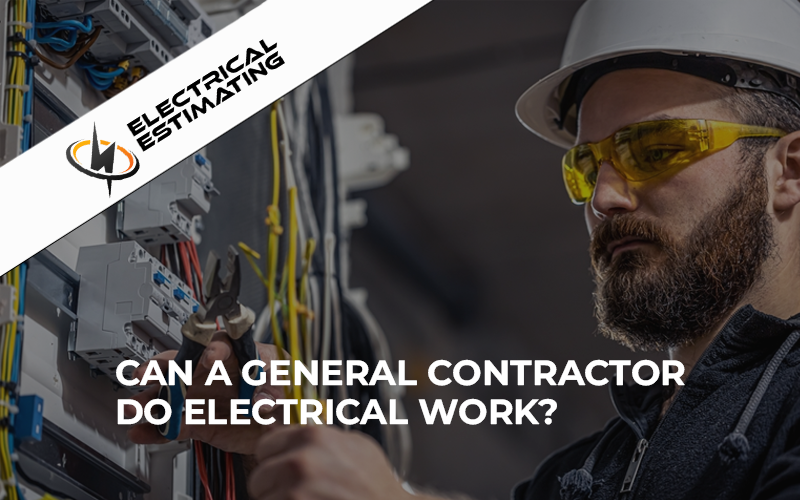Commercial Electrical Wiring Cost Per Square Foot

Are you constructing your new commercial building? The framing job is done, the plumbing work is in, and now it’s time to do the most important task of your commercial building, electrical wiring. You certainly might think about how much could electrical wires cost. These electrical wires are the nervous system of your commercial building structure, so you cannot afford the risk of ignoring its cost.
The electrical system plays a crucial role in determining the functionality and efficiency of a commercial building. However, the electrical infrastructure of a commercial building varies depending on the business or operation that runs within the walls of the building. This blog will help you determine the commercial electrical wiring cost. So, let’s start to read this informative article.
Average Cost of Electrical Wiring per Square Foot
The cost of a commercial building wiring is usually higher than the residential wiring cost. In general, the cost to wire a commercial building depends on the type of business you operate within, the size and structure of the building, and the location of your commercial building.
According to HomeAdvisor, the average cost of electrical wiring for a commercial building is between $6 to $10 per square foot. That means for a 1000 square feet commercial building you have to spend $6000 to $10,000 for electrical wiring.
Factors Affecting Commercial Electrical Wiring Costs
As mentioned earlier, the cost to wire a commercial building depends on various factors. In this section, we will mention some of the crucial factors that influence the cost of your building wiring.
-
Type of Building
The type of your commercial building determines the cost of electrical wiring. For instance, setting up an electrical system for a shopping mall needs more square footage than wiring an office building. A shopping mall needs more electricity-driven appliances or machinery which increases the overall wiring cost.
In the same vein, the industrial building needs a more intricate electrical system to handle the heavy machinery and equipment used for manufacturing. So, the cost to wire an industry facility is even higher than the cost of commercial building wiring.
-
Complexity of the Job
The nature of your electrical wiring project greatly influences the cost. For example, if you are constructing your new commercial building then you can set up an electrical system to your desire or needs. From choosing cable type to lighting, you can do all by your choice.
On the contrary, renovation projects require rewiring as old facilities may be damaged during demolition. The wiring cost for installing a new electrical system might change from updating the existing one.
-
Location of the Building
The location of your commercial building plays a significant role in wiring cost variation. Generally, the cost of labor and materials changes from one region to another.
Rural areas have higher labor costs while in remote areas accessing quality material is a daunting task, both factors influence the overall per-square wiring cost. Additionally, local market economic conditions and the market conditions also influence greatly the cost of electrical wiring.
-
Age of the Building
One of the most important factors that influence the price of your commercial building’s electrical wiring is the age of your building. Mostly, an older building may require a huge work to do so a higher cost is required to wire an outdated electrical system.
-
Material Type and Equipment
The material type for your electrical system directly influences the cost of your electrical wiring per square foot. Copper wiring is more expensive as compared to aluminum material wiring. However, the majority of people choose copper wiring due to its conductivity and durability as it is long-term cost-saving.
Likewise, the specialized equipment that you use within your commercial building also impacts your overall wiring cost as specific equipment demands unique electrical steups. If you open a restaurant within your commercial building, then you need a durable electrical setup that drives heavy kitchen electronics. On the other hand, if you run a data center then you need a robust electrical system that drives heavy power machinery.
-
Permits and Inspection Fees
It is essential to remain within the local regulations while handling any electrical wiring project. The electrical wiring cost per square foot varies with the permit charges. To ensure safety and compatibility, you must follow the local codes and regulations. When you start your electrical project, your contractor will get the permit from the relevant federal department and this permit cost will add to your overall wiring cost.
Similarly, the inspection fee which is between $300-$700 is necessary to inspect the safety and reliability of your designed electrical wiring system.
-
Labor Costs
In the United States, the labor cost for electrical work can lie anywhere between $50 to $150 per hour. Labor cost depends on the size of your building and the complexity of your electrical system. However, the wiring should be compliant with the local codes so you have to hire professional and licensed electricians for wiring.
Want to Get an Estimate For Your Potential Commercial Electrical Project? Contact Us Now!
Additional Costs to Consider
Apart from material, labor, and inspection costs, some other additional costs need to be considered while starting to wire your commercial building. Here is a brief overview of these expenses.
-
Costs for Special Requirements
The electrical setup of each commercial building is based on the specific requirements of that building. And the overall wiring cost depends on these specific needs. For instance, some commercial buildings need to install fire alarm systems or special security systems. To install these systems, some additional cost must added to the overall commercial wiring cost.
-
Costs for Compliance With Building Codes
Installing an electrical wiring system in a commercial building needs to comply with the local building codes and regulations. To ensure that your building complies with the local codes, you have to spend money on the inspection of your electrical wiring project. This is an additional cost apart from the electrical wiring labor and material costs.
-
Potential Unexpected Expenses
When you prepare a cost estimate for the electrical wiring of your commercial building, always make sure that you consider some additional cost for potential unexpected expenses. Suppose you buy copper wiring from a vendor, but when you execute your wiring project you would find that some portion of the wire is damaged. So, you have to buy some extra wire to compensate for the wire damage. For this reason, you have to add some extra cost to your electrical estimates.
You may also like: Estimate commercial electrical work.
Tips for Saving Money on Electrical Wiring Costs
There are many ways through which you can save money on electrical wiring projects. Like, you can hire some experts to get accurate commercial electrical estimating services. Apart from this, some pro tips would help to save your valuable money that we’ll mention below. So, let’s delve into the details.
-
Plan Ahead
Before starting your electrical wiring job, take time and plan how you will execute this project. This planning saves you time and money in the long run. When you start wiring your new commercial building, ensure that you have a detailed plan and layout for your electrical job. This planning prevents additional costs or any inconvenience during your project execution.
-
Use Copper Wiring
Try to use wiring made of copper material as copper is the most durable and conductive material. No doubt, copper is an energy-efficient material that has a high upfront cost but once you install it into your electrical system you save money in the long run.
-
Hire Professionals
Electrical work is not like other DIY projects. It is dangerous to do electrical wiring by yourself. So, it’s better to hire a professional and licensed electrician to get their services for your commercial building wiring. Hiring a professional electrician may seem a higher cost but it will prevent future problems.
-
Get Multiple Quotes
Hiring some professionals for your commercial building wiring project is the best decision. But we recommend you get multiple quotes from different companies that would help you to compare prices and find the best fit for you.
-
Regular Maintenance
Regular maintenance of your electrical system helps you save money. By keeping your electrical setup in good condition, you can avoid major issues that may bring expensive repairs.
Hire Our Professional Estimators to Make Your Current Electrical Project Successful!
Case tsudies of Commercial Electrical Wiring Projects
Lighting and HVAC systems are the two main energy-consuming systems. Lighting plays a crucial role in the functionality and efficiency of any commercial building. Likewise, the type of heating, ventilation, and air conditioning systems contribute greatly to the cost of electrical wiring.
Every commercial building has a unique electrical system depending on the needs of its occupants. Here, we have mentioned some commercial buildings with electrical appliances that are utilized within their premises.
| Commercial Building Projects | Appliances and Devices |
| Hospital | Patient monitor, Ventilator, Ultrasound machine, Infusion pump, EKG machines |
| Restaurant | Over, Mixers, Slicers, Freezers and refrigerators, Ranges and ventilations, |
| Data Center | Server rack, Redundant power sources, Cable management supplies, Computer and network equipment |
| Office | Vending machine, Electrical kettle, Water cooler, Barcode scanner, Binding machines |
| Warehouse | Electric forklift, Pallet truck, Electric order picker, Electric stacker |
Conclusion
Electrical wiring is essential to power a commercial building. Reliable and durable electrical wiring boosts the efficiency and functionality of your building. So, you must be careful while wiring your building. Undoubtedly, the cost of electrical wiring is crucial as it affects your overall electrical project budget.
Here, we have discussed in detail what factors can influence the wiring cost and how can you reduce the wiring cost. We recommend you get electrical wiring estimating services from a professional estimator to prevent any unexpected budget overrun.
FAQs


